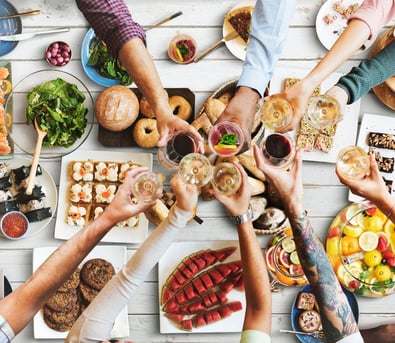 In 2010 as part of the Affordable Care Act, it was required that all chain restaurants, groceries, and convenience stores post their calories for customers to see. Some started right away, and you might have noticed them pop up at Starbucks or McDonalds over the years. However, on May 7, 2018, it finally took effect that all food sellers with more than 20 locations now must have the calorie postings visible, with access to all nutrition information available upon request.
In 2010 as part of the Affordable Care Act, it was required that all chain restaurants, groceries, and convenience stores post their calories for customers to see. Some started right away, and you might have noticed them pop up at Starbucks or McDonalds over the years. However, on May 7, 2018, it finally took effect that all food sellers with more than 20 locations now must have the calorie postings visible, with access to all nutrition information available upon request.
Why This Change Is Such a Good Thing
Americans currently eat and drink a third of their calories away from home. The purpose of putting the calorie count on the menus, display boards, and digital screens was to help Americans make more informed choices and hopefully choose healthier options that are available. The FDA has shown that since menu labeling began, consumers have decreased the number of calories ordered by 30 to 50, which could mean a 3–5-pound weight loss in a year.
Tips for Better Nutrition When Dining Out
If you currently dine out, here are some tips to help make the best decision when ordering:
- Think your drink. The drink you choose can add up to 500 calories to your meal, yet doesn’t affect how full you will feel when you drink it. Instead, look for calorie-free drink options. Water and unsweetened iced tea are the best; however, occasionally you can choose a diet soda or sugar-free lemonade to go along with your meal. This new labeling will also list the calorie content for alcohol, so make sure to include those calories when planning a balanced meal.
- Load up on veggies. Consider swapping the traditional side of fries, chips, tots, etc. for a vegetable. Salads, raw veggie sticks, or a hot vegetable option when available will keep the meal high in fiber and lower in fat and calories.
- Choose a protein. Protein helps keep you full and satisfied, so if you don’t want to be reaching for a snack an hour after your meal, be sure to have a protein source at every meal. Anytime you can choose a lean protein like poultry, seafood, and lean red meat, it’s even better!
- Go for the whole grain. Protein isn’t the only thing that will keep you full; so does fiber. Choosing a whole grain when available is another must for staying satisfied longer. Choose a whole-wheat pizza crust, brown rice, or whole-wheat pasta or rolls when they are offered.
- Practice portion control. Many meals eaten out are so large that you can easily save half and have it for another meal or split the meal with your dining partner. Keep in mind portion sizes: one serving of meat should be the size the palm of your hand, sides are around the size of a tennis ball, and added fat like butter is the size of the tip of your thumb.
- Try mindfulness. So many times when you dine out, it’s for a quick and easy meal or a celebration or social event. During these times you could be distracted and not paying attention to your hunger and fullness levels. Take time to pause between bites and assess whether you are full and can save some of the meal for later.
Take advantage of the new labeling as a way to help you stay informed about your choices. Look over the menus and choose a reasonable meal that will let you leave the restaurant happy with your choice!
This blog was written by Angie Mitchell, RD, Wellness Coordinator. To find out more about the NIFS bloggers, click here.

